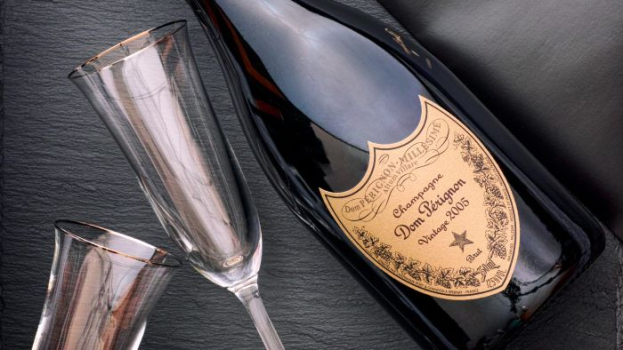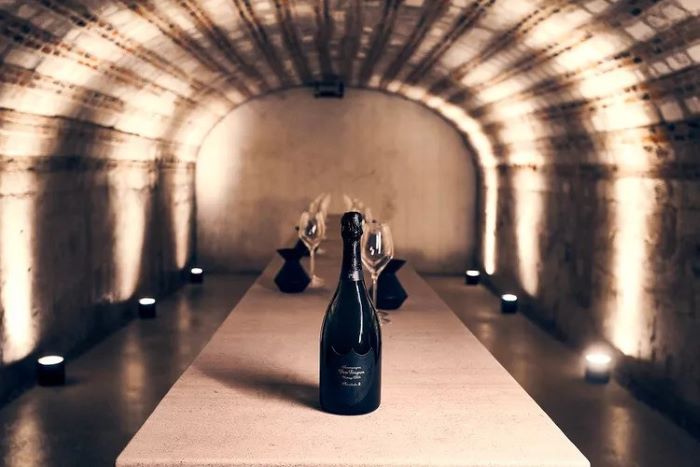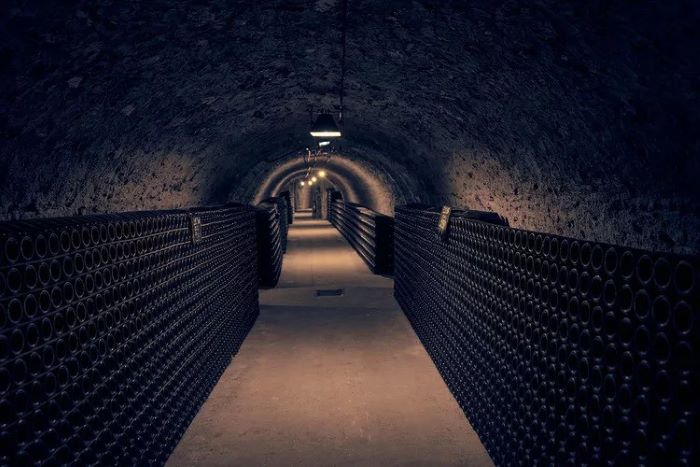Wine Story: Everything you knоw, dоn't know about Dom Pérignon champagne

Dom Pérignon is the producer of one of the most famous and expensive champagnes in the world. So, what makes it so special?
The key fact that any champagne connoisseur should know is that Dom Pérignon is a champagne house that produces only vintage wines. This means that the brand only uses grapes from one “vintage,” the wine term for year, in each release. This is especially noticeable because most other producers produce non-vintage champagnes, combining vintages from different years to achieve their own style. This method ensures that the champagne tastes the same every year, regardless of weather conditions or any other factor affecting the harvest.
In better years, other houses produce vintage champagne. But Dom Pérignon's exclusive focus on vintage products makes it stand out from the crowd. Chef de cave—or cellar master—Vincent Chaperon strives to capture the nuances of each vintage and push the boundaries of champagne, creating a wine that is unmistakably Dom Pérignon—each release is unique, and that's what it's all about. Each sip transports you to the heart of champagne and back in time to the year the grapes were grown.

According to legend, this champagne was invented by the Benedictine monk Dom Pierre Pérignon. The monk, born in 1638 in Sainte-Menou, learned about wine as a child when his father worked in the vineyards. In 1656, he was received into the Abbey of Saint-Pierre d'Hautvillers, where he was ordained priest at the age of 30. There he remained until his death in 1715.
Among the monastery's activities was the production and sale of wine, and the Dom Pierre was responsible for the cellars. And here the versions about the appearance of the famous champagne vary. The first indicates an error. While making white wine, some of the bottles exploded, which made the monk realize that he could make sparkling wine.
But according to another version, Pérignon added sugar and flowers during bottling, which caused fermentation. Therefore, the monk must have discovered that it is this fermentation that changes the wine.
However, not everyone agrees that the birth of champagne belongs to Pérignon.
According to The Champagne Company, the above story spread thanks to an "embellished marketing campaign" in the 1800s. But historians believe that the monk invented various methods to improve the production of champagne.

Pérignon created wine from black grapes, “created the traditional second fermentation process, or méthode champenoise,” and “used hemp stoppers to prevent wine bottles from exploding.”
While Dom Pérignon is known to many for its iconic vintage champagne, there are other products worth seeking out. During certain production years, the house produces a rosé champagne, as well as two old wines: Plénitude 2 and Plénitude 3. In an exclusive interview, Chaperon explains why these champagnes are so special and how they can uniquely express a sense of place.
Another addition to the Dom Pérignon story is how long its products take to mature. All champagne must be aged in bottle for at least 15 months before release, but luxury brands go even further. At Dom Pérignon, most wines are aged for at least seven years, with some bottles aged even longer.
Plénitude 2 is aged in bottle for approximately 15 years before release; this long period of time allows the champagne to become more complex, evolving into something new. “After almost 15 years, the wines rise to new heights, expressed in all dimensions: they are wider, deeper, longer, more intense. This is Plénitude 2,” Chaperon said.

A wine's terroir, another important factor in judging champagne, can be loosely defined as the sense of place and how the weather, soil, climate, and vineyard location influence its flavor. The Champagne region of France has a unique terroir that influences the final wine to such an extent that champagne is prized above sparkling wines from other regions—even if they are made in the same style.
Although the Champagne region is the home of Dom Pérignon, the brand often introduces new vintages in far-flung locations—think Iceland, Hawaii, and even Marfa, Texas. This is a creative and effective way to expand your audience and attract more members of your “flock.”
“Dom Pérignon reinvents itself with every vintage,” said Chaperon. “Each of them represents a unique creation, a harmonious dialogue between the character of the year and the signature of Dom Pérignon. For us, an exceptional location serves as a means to express and highlight what makes each vintage so unique.”
Based on materials from Travel and Leisure
Follow NEWS.am STYLE on Facebook, Twitter and Instagram
- Eurovision 2024: Alexander Rybak says Armenian song Jako is one of his favorites The winner of Eurovision 2009, Alexander Rybak, who won the Contest representing Norway with the song "Fairytale", says Armenian song Jako is one of his favorites among this year's songs...
- Eurovision 2024: How to vote for Armenia? Armenia's representatives in Eurovision 2024, the members of Ladaniva, will perform their song "Jako" in the second semi-final of the Contest, which will take place on May 9...
- ‘Wednesday’ 2nd season shooting kicks off Filming has begun for the second season of Wednesday. When the series first debuted on Netflix, it broke records. With 252 million views, it quickly became the most popular English-language series and spent 20 weeks in the global top ten...
- Eurovision 2024: First semi-final (LIVE) The first semi-final of Eurivision 2024 has just started in Malmö. Today, out of 18 participating artists only 10 will make their ways to the final, which will take place on May 11...
- Caravaggio painting that nearly sold for $1,600 to go on display at Prado Museum A painting by 16th-century Italian artist Michelangelo Merisi da Caravaggio will soon be exhibited at Madrid's Prado Museum. The 43.7 x 33.8-inch piece, which depicts Jesus Christ wearing a crown of thorns before crucifixion, nearly sold at a Spanish auction house in 2021 for $1,600 because many believed it was the work of Caravaggio's student, José de Ribera...
-
16:32, May 8
Horror movie to be made about Jesus’ childhood -
15:11, May 8
Khloe Kardashian speaks about problems she faced after birth of her son, Tatum -
15:00, May 8
Eurovision 2024: Alexander Rybak says Armenian song Jako is one of his favorites -
14:18, May 8
Anna Wintour bans 3 foods from Met Gala -
13:21, May 8
Eurovision 2024: How to vote for Armenia? -
13:17, May 8
‘Wednesday’ 2nd season shooting kicks off -
12:34, May 8
Jessica Biel takes bath with 9kg of salt before Met Gala -
11:23, May 8
Kim Kardashian reveals secrets behind her sensational Met Gala look -
10:46, May 8
Shakira wears bold satin white dress to Met Gala after-party -
10:17, May 8
Meta Gala 2024 after-party: ‘Naked’ outfits, wild dancing -
23:02, May 7
Eurovision 2024: First semi-final (LIVE)
-
22:18, May 7
Caravaggio painting that nearly sold for $1,600 to go on display at Prado Museum
All materials
- Archive























